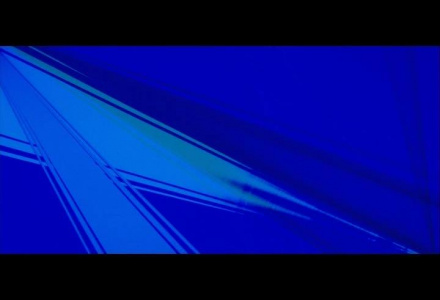#11 (Marey <-> Moiré)
Summary
Joost Rekveld’s film was shot entirely in the filmmaker’s work space. An arrangement is created where a white pointer with varying frequency spins in front of a black surface. The pointer is illuminated by a strobe light that also has a varying frequency. The lamp is perpendicular to the pointer. By placing a camera along the same axis as the lamp using a semi-transmissive mirror, the pointer is filmed. The camera has been modified to have a variable shutter speed. The camera, lamp, and rotating pointer are controlled by a computer program that regulates the different frequencies and shutter speeds. The interference patterns generated by this experimental setup form the basis of # 11: the black and white images are processed using an optical printer, which creates integrated colour images of these patterns. This leads to an abstract composition.
With ‘Marey’, Rekveld is referring to the French scientist Étienne-Jules Marey, who in the late 19th century used chronophotographic plates to create moving graphics. By photographing an irascible bird several times on the same negative, its entire flight movement could be captured in a single image. Marey divided one motion into smaller parts, and showed them within a single image. In # 11, Rekveld also divides time into parts. In the process, he touches upon the essence of film: the depiction of ‘a world’ in (usually) 24 frames per second. ‘Moiré’ is a reference to the Swiss photographer Ernst Moiré, who discovered an interference effect that was named after him.
Information
Images
Crew
- Camera
- Editing
- Director
- Producer
Technical notations
more information
If you are looking for more material from our collection, please contact
Ms. Leenke Ripmeester
sales@eyefilm.nl
phone +31 (0)20 5891 426
mobile +31 (0)6 4118 9635


